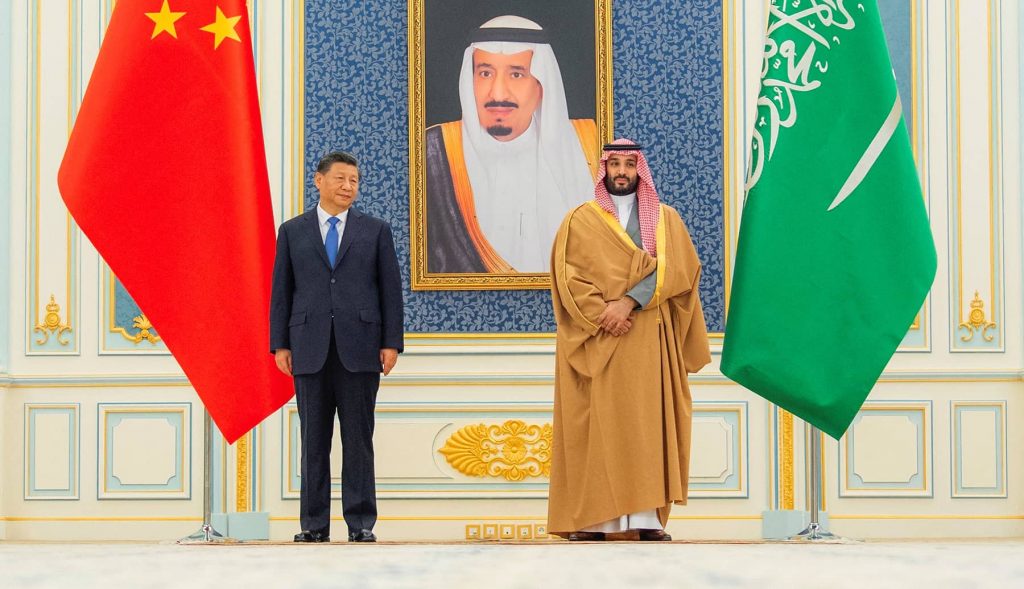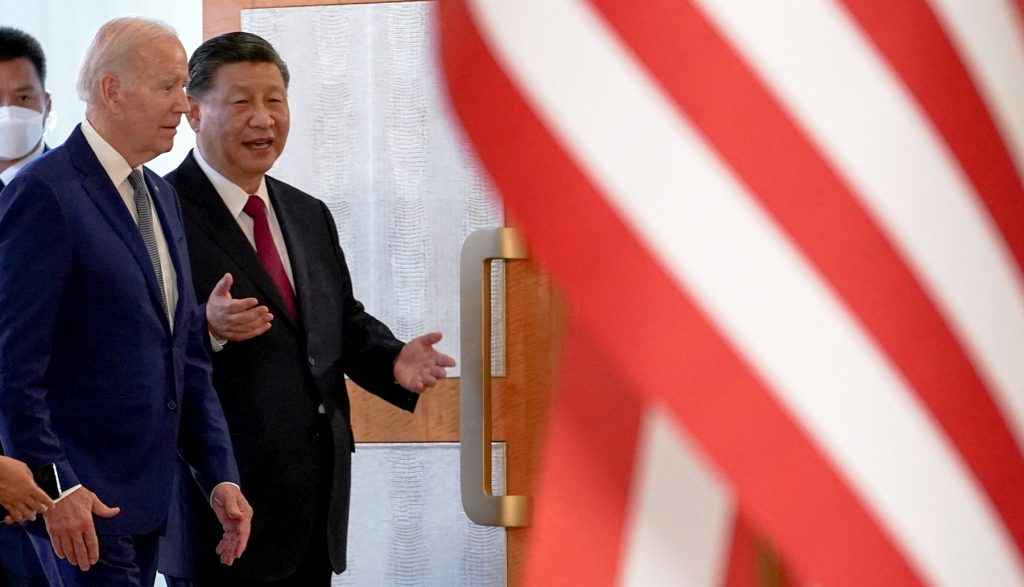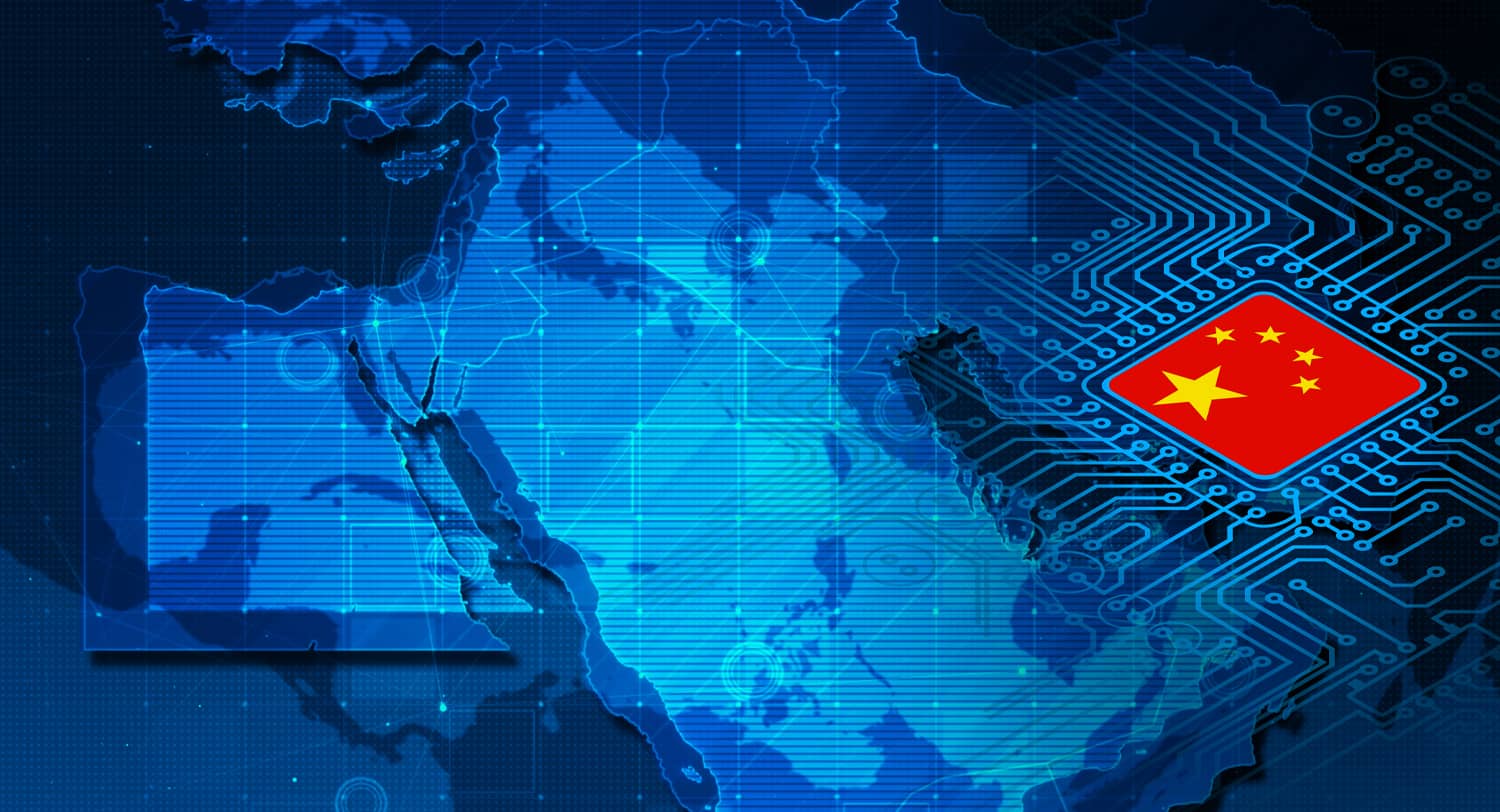The difficulty in comparing America’s and China’s influence in the Middle East is that the two operate on entirely different planes. [Note: The Chinese use the term Western Asia, rather than the Middle East, to refer to a region that includes the Levant, Iraq, the Gulf, Turkey and Iran.] Despite China’s impressive naval construction program, China cannot challenge American dominance of the seas within any definable time horizon. There is no indication that China has or soon will develop the capability to put boots on the ground in the region. At the same time, China’s economic and technological presence has jumped during the past several years, and the United States cannot compete with China in critical areas such as broadband infrastructure.
The Military Balance
China’s military presence in the Middle East remains small. Its 200 marines at the Djibouti naval base are on standby for anti-piracy and civilian rescue operations. China reported has sponsored the creation of a joint maritime force including Saudi Arabia, Iran, the UAE, and Oman, but has committed no ships to the project. A February 2013 note from the American Enterprise Institute observes, “Current Chinese basing capacity and force commitment in the region seem insufficient to support the level of economic and diplomatic engagement that appears to be Beijing’s new normal, so Washington should prepare for further expansion.” There have been rumors about plans for a Chinese naval base in the UAE, so far unconfirmed.
The latest Pentagon assessment of China’s military does not predict an expansion of China’s expeditionary capability. China has just 30,000 marines versus America’s 200,000, and perhaps 12,000 special forces versus America’s 70,000.
In August 2014, President Obama complained that China was a “free rider” in the Persian Gulf, letting the United States bear the cost of a blue-water fleet that protected China’s oil supplies The charge was fair: Although China has dramatically increased its military spending, its commitments to the Middle East remain de minimus. China remains a free rider. If the American commitment to protect shipping lanes erodes, China may step in, but that remains hypothetical. For the time being China will devote the bulk of its military resources to coastal defense, including medium- and long-range missiles, the J-20 interceptor, satellites, electronic warfare and submarines.
In the meantime, China’s position is that its interests in the region do not conflict with America’s. Pan Guang of the Shanghai Academy of Social Sciences, told the “Observer” website in 2022: “China’s economic investment and US military investment can complement each other in some places, such as in the Gulf countries. It is very simple. Several major overseas military bases of the United States are there. The largest military base is in Qatar, there are two in Saudi Arabia, and there are also in the United Arab Emirates. However, the infrastructure construction in these countries is not done by American workers, but by Chinese workers. And laborers from Southeast Asian and South Asian countries such as Thailand, the Philippines, Sri Lanka, and India are doing it.”
The Economic Balance
China’s exports to Saudi Arabia at the end of 2022 and early 2023 reached an annual rate of about $45 billion, roughly double the pre-COVID volume. By contrast: In 2014, European Union exports to KSA peaked at $45 billion, but fell to just $33 billion in 2022. US exports peaked at $19 billion in 2015 and fell to $11.5 billion in 2022. China has displaced the US and Europe as the leading supplier of industrial goods to Saudi Arabia, including telecom infrastructure, solar power, mass transit and other high-tech items.
China’s exports to Israel doubled between 2018 and 2021 and have held steady since (though remain at a level far below Europe’s exports). Interestingly, China’s exports to Iran are a small fraction of their 2014 level, perhaps reflecting the impact of sanctions on Iran.
Also notable is the surge in Chinese exports to Turkey and Central Asia. These have nearly tripled from pre-COVID levels, for several reasons, including Turkey’s role as an intermediary between China and Russia, especially for sanctioned goods.
A key component of the economic relationship with Turkey and Central Asia is China’s commitment to building land transport—railroads and pipelines—across Asia. Given the possibility—however small–of US interdiction of China’s trade with the Gulf in the event of war, China is building alternative means of transport. It’s cheaper to build railroads than navies.

China’s Strategic Considerations
China’s goals are in part guided by long-term strategy and in part reactive and opportunistic. It’s long-term interests in the region, In descending order of importance, are these four:
- Assuring the free flow of oil from the Persian Gulf, for which China is the world’s largest customer. In that respect, China will promote stability.
- Building out the Belt and Road Initiative through overland transport of energy and other goods as an alternative to vulnerable seaborne traffic.
- Expanding the market for its high-tech industry, especially in the Gulf.
- Increasing support in the Muslim world and particularly with Turkey to contain Muslim radicalism at home and build understanding of its Uyghur policy.
China has other, smaller objectives, for example, more access to Israeli technology. China has no strategic interest in the Palestinian issue. Its offer to mediate an Israeli-Palestinian peace is a diplomatic fishing expedition. The proposal puts pressure on Israel at no cost to China, and may build Chinese bargaining chips in future negotiations with Israel.
American analysts often look for a hidden Chinese plan to parlay economic power into political or military influence. This misses the salient point. China’s influence stems from raw economic power, in particular from a near-monopoly on critical technologies that the region requires. Huawei is a better provider of mobile broadband than Ericsson or Nokia. The United States produces no broadband infrastructure at all. In the case of solar power, a technology of enormous interest to the Gulf states, China exercises a near monopoly on the production of solar cells. Huawei offers an AI-controlled solar cell with enhanced efficiency. China also produces port management technology; its fully-automated Tianjin Port was designed as an export product. Market dominance in key technologies creates long-term dependence on China.
Another consideration for China is the American withdrawal from Afghanistan. Authorities in China (as well as Russia and India) are worried about Muslim radicalism in Central Asia, and China’s diplomatic and economic emphasis on the region to some extent is an attempt to fill the gap left by the United States – and if possible draw the Taliban regime into a more business-oriented mode (based on Chinese development and exploitation of Afghani natural resources).
The Ukraine War, moreover, has enhanced China’s influence in several ways. First, US sanctions against Russia—especially the unprecedented seizure of hundreds of billions of dollars of its foreign exchange reserves—have made China’s RMB more attractive as a reserve and trade-finance currency. Second, Turkey’s position as a trade intermediary for Russia (both for Russia’s imports of sanctioned goods and exports of hydrocarbons) has enhanced Turkish standing. Third, India’s emergence as the leading customer for Russian oil has vitiated America’s effort to enlist India in an anti-China coalition, indirectly enhancing China’s strategic position.
More generally, China’s exports to the Global South are having a transformative effect on many countries. Broadband infrastructure is a game changer, enabling a whole range of technologies ranging from micro-finance to telemedicine.

There are numerous areas in which Israel’s pockets of expertise—in agriculture, environmental technology, water management, medicine, and AI—could find synergies with China’s campaign of infrastructure building. For example, Israeli expertise in water management, environmental controls and desert agriculture dovetails with China’s initiatives in the Global South. I have argued elsewhere that the United States should initiate a Western consortium to compete with China, but this remains purely hypothetical.
Iran remains the greatest source of uncertainty. The Iran-Saudi deal mediated by Beijing has not led to any improvement in the extremely depressed state of Sino-Iranian trade. It is important for Beijing to understand that if Iran comes close to readying nuclear weapons, Israel will be forced to act in its own strategic interests, and the consequences of such action may be detrimental to China’s economy.
Conclusion
China is not challenging America’s military presence in the Middle East nor is America challenging China’s leadership in trade and infrastructure investment. Although China’s direct military involvement remains minimal, its economic influence will strengthen and shape relationships in the region, for instance, the Chinese-built infrastructure that enhances Turkey’s relations with Central Asia.
Meanwhile, America’s attempt to contain China technologically is ineffective and fundamentally misguided, as I have argued elsewhere, posing problems for America’s traditional allies in the region. Israel has no alternative to this alliance but should explore opportunities with China that do not undermine it. Israel should continue to find ways to work with China and its regional trading partners in non-military areas, despite American pressures to the contrary.



